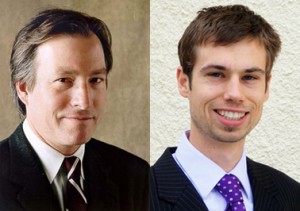View Source | February 10, 2014
 Arizona State University engineers will lead two multi-university/industry research teams in support of a new U.S. Department of Energy program to develop technologies that use the full spectrum of sunlight to produce inexpensive power during both day and night.
Arizona State University engineers will lead two multi-university/industry research teams in support of a new U.S. Department of Energy program to develop technologies that use the full spectrum of sunlight to produce inexpensive power during both day and night.
The department's Advanced Research Projects Agency – Energy (ARPA-E) recently announced allocation of $30 million in funding for 12 projects selected to conduct research for its Full-Spectrum Optimized Conversion and Utilization of Sunlight (FOCUS) program.
Stephen Goodnick will lead the project High-Temperature Topping Cells from LED (Light-Emitting Diode) Materials, which has been allocated $3.9 million.
Goodnick is a professor in the School of Electrical, Computer and Energy Engineering, one of ASU’s Ira A. Fulton Schools of Engineering, and deputy director of ASU LightWorks, a strategic framework for light-inspired research.
Zachary Holman will lead the project Solar Concentrating Photovoltaic Mirrors, which has been allotted $2.6 million.
Holman is an assistant professor in the School of Electrical, Computer and Energy Engineering.
ARPA-E selects energy technology development projects based on their potential to enhance the nation’s economic and energy security. The projects promise to help reduce imports of energy from foreign sources, reduce energy-related emissions – including greenhouse gases – improve energy efficiency in all economic sectors and ensure the United States maintains a technological lead in developing and deploying advanced energy technologies.
Goodnick’s FOCUS project will develop a photovoltaic device that operates effectively at more than 400 degrees Centigrade (more than 750 degrees Fahrenheit) as the key component of a hybrid concentrating solar thermal power (CSP) system that provides overall higher sunlight-into-electricity conversion efficiency than either a stand-alone photovoltaic system or current CSP systems. It is also to provide a lower dollar-per-watt cost.
The material technology used in the photovoltaic device has already demonstrated its reliability and performance in solid-state lighting applications and should be rapidly applicable to solar systems, Goodnick says.
ASU’s research partners on the project are professor Alan Doolittle at the Georgia Institute of Technology, Soitec, one of the world’s leading providers of concentrator photovoltaic systems and a manufacturer of semiconductor materials for electronic and energy industries, and AREVA Solar, a leader in providing concentrated solar power to a global customer base.
The project team includes ASU professors Christiana Honsberg and Dragica Vasileska, and assistant professor Srabanti Chowdhury, faculty members in the School of Electrical, Computer and Energy Engineering, along with Fernando Ponce, a professor in the Department of Physics in ASU’s College of Liberal Arts and Sciences. Honsberg is director of the Quantum Energy and Sustainable Solar Technologies (QESST) Engineering Research Center at ASU, which is supported by the Department of Energy and the National Science Foundation.
Holman’s FOCUS project will incorporate photovoltaic cells into large reflectors used by solar power plants to generate heat – and subsequently electricity – from the concentrated sunlight.
The process is designed to improve the efficiency of how solar thermal power plants generate electricity, promising a significant increase in the daytime output of energy while also being able to store solar energy for power generation at night.
Holman says the photovoltaic cells he will use will replace the traditional silver mirrored surface of the large parabolic troughs now used in solar power plants such as the Solana plant in Gila Bend, Ariz.
The cells will absorb visible light and efficiently convert it to electricity, while ultraviolet and infrared light, which would be wasted if it were collected in photovoltaic cells, will instead be reflected onto a black tube at the trough focus. A fluid in the tube will carry the generated heat to be either converted to electricity with a steam turbine or stored for later conversion, he explains.
His project team includes researchers at the University of Arizona, along with Mariana Bertoni, an assistant professor in the School of Electrical, Computer and Energy Engineering.

